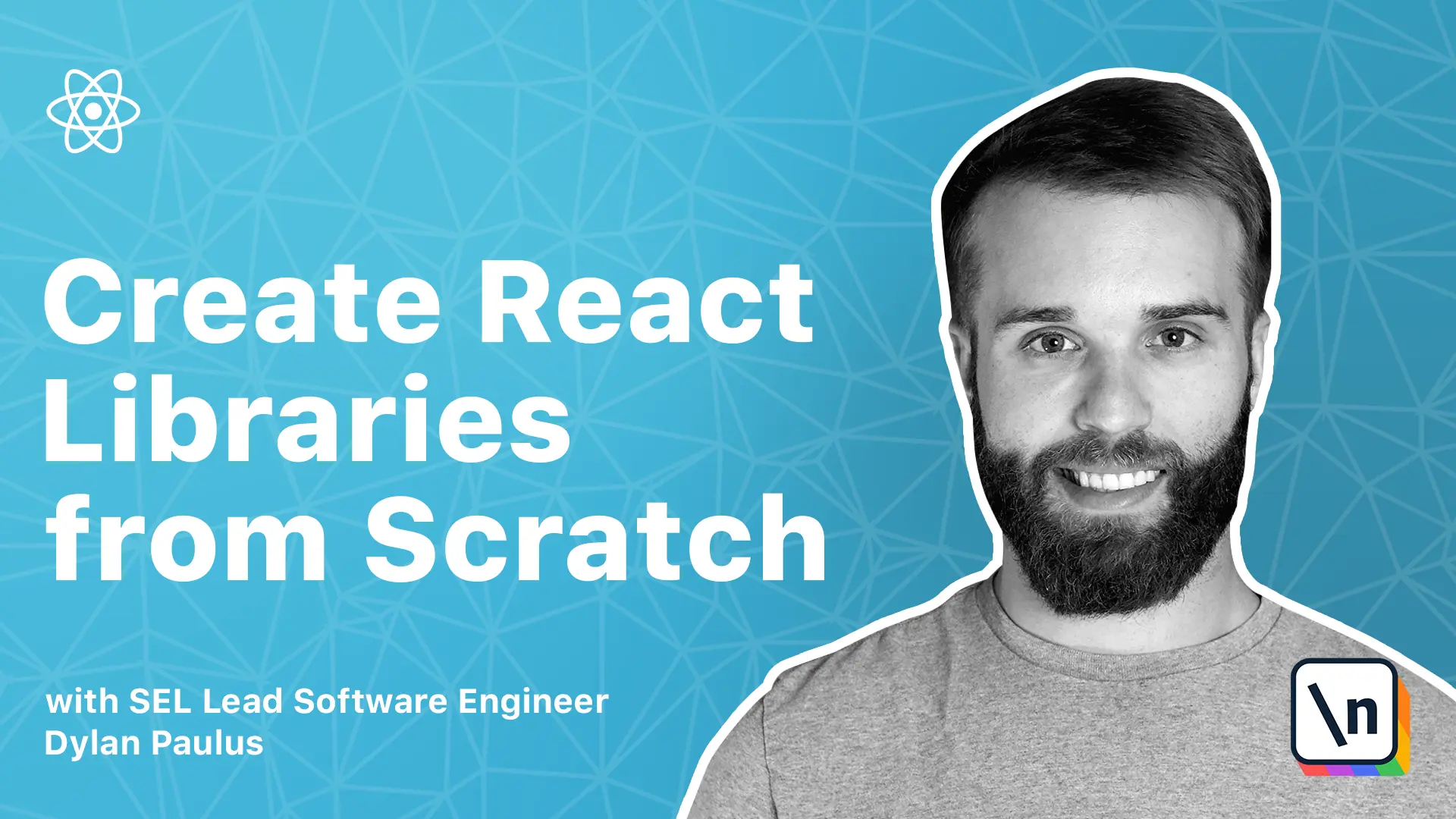This lesson preview is part of the Creating React Libraries from Scratch course and can be unlocked immediately with a \newline Pro subscription or a single-time purchase. Already have access to this course? Log in here.
Get unlimited access to Creating React Libraries from Scratch, plus 90+ \newline books, guides and courses with the \newline Pro subscription.

[00:00 - 00:04] Welcome to Creating Rack Libraries from Scratch. I'm Dylan Paulus, your instructor for this course.
[00:05 - 00:12] I spend my day writing full-stack applications in Rack Libraries for critical infrastructure. An area I see engineers struggle with is how to share the React code.
[00:13 - 00:20] Rightly so, there's a lot of moving pieces to front-end development. I'm excited about this course to help narrow the gap between an empty directory and a fully managed React library in the node package manager.
[00:21 - 00:27] And this course will take a deep dive in creating a Rack library from scratch. We'll be implementing the library for calling Scroller.
[00:28 - 00:31] And easy to use React website Scroller. The implementation of Scroller will be minimal.
[00:32 - 00:43] We'll be spending this course learning how to create, publish, and maintain a React library. Though the code base has a focus on React, many of these same techniques could be used in the Node.js or JavaScript project.
[00:44 - 00:53] React is a framework developed by Facebook to make developing user interfaces easier. In the 2020 State of JavaScript survey, an annual survey conducted a front-end JavaScript community.
[00:54 - 01:05] React came in as the most used front-end framework due to React's popularity, writing libraries, and it can expose you to a huge range of contributors and possibilities. This course is for the developer who wants to share the React code.
[01:06 - 01:14] Libraries are an excellent way of creating modular code that can be reused and shared between projects. As a code owner, writing a library can expose you to excellent contributors and learning opportunity.
[01:15 - 01:24] To get the most out of these lessons, you may want to be comfortable with front-end development. This means knowledge of JavaScript, how to use a terminal, and some knowledge of React is recommended but not required.
[01:25 - 01:33] Don't worry if you're not an expert in these areas though. Take a minute to refresh yourself with the React.js introductory tutorial and JavaScript fundamentals before continuing.
[01:34 - 01:40] Creating React libraries from scratch will be presented in four modules. And module one will be setting up and installing dependencies for scroller.
[01:41 - 01:47] Module two will be implementing scroller and setting up storybook. Module three will cover deploying it to the Node package manager.
[01:48 - 01:55] And the final module will be looking at ways to improve our library and make it more maintainable. Throughout this course, we're working on a library we're calling scroller.
[01:56 - 02:06] Scroller is a library to expose the scroll to API through React hooks. We'll be writing a small API surface for scroller so this course can focus on the tooling and techniques that we're revolving around the front-end library.
[02:07 - 02:13] For support, join us on the new line discord channel. I look forward to hearing your questions and seeing what you build throughout this course.
[02:14 - 02:15] With that, let's get started.